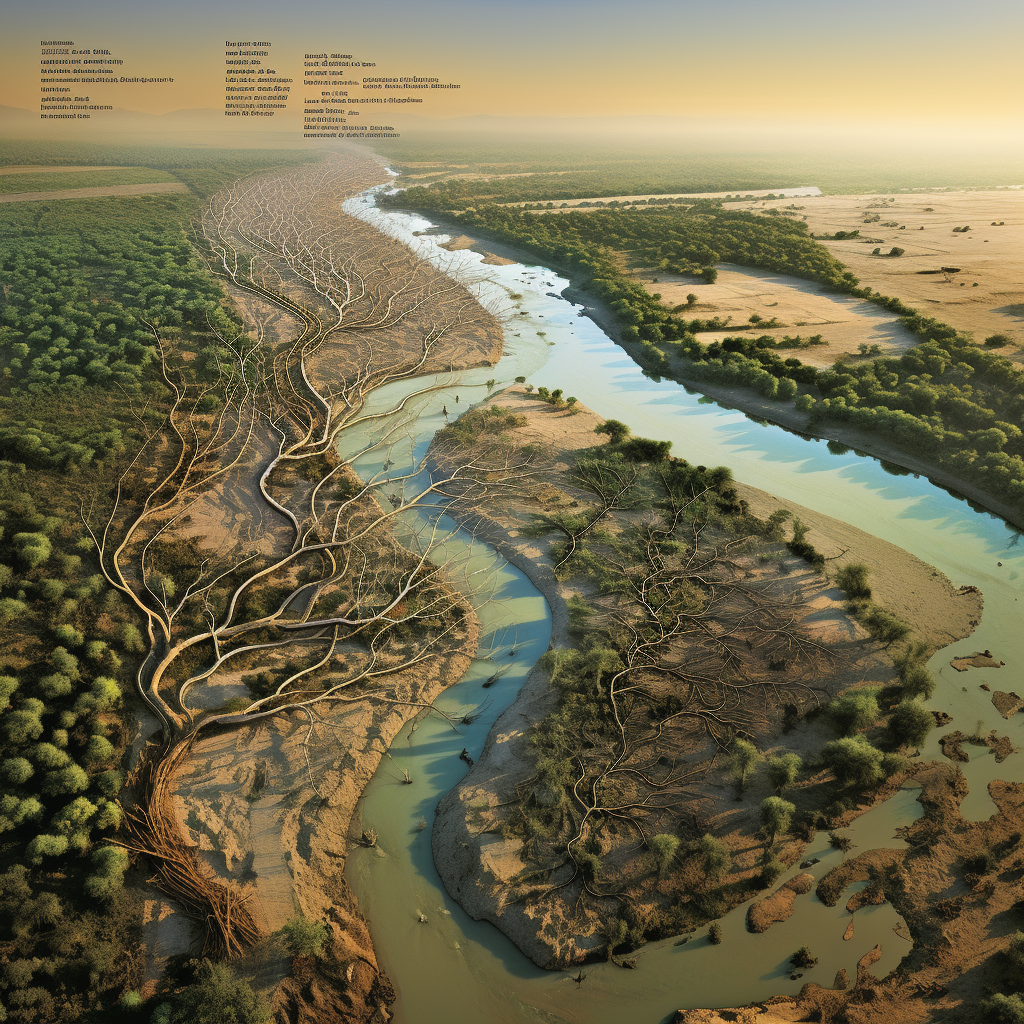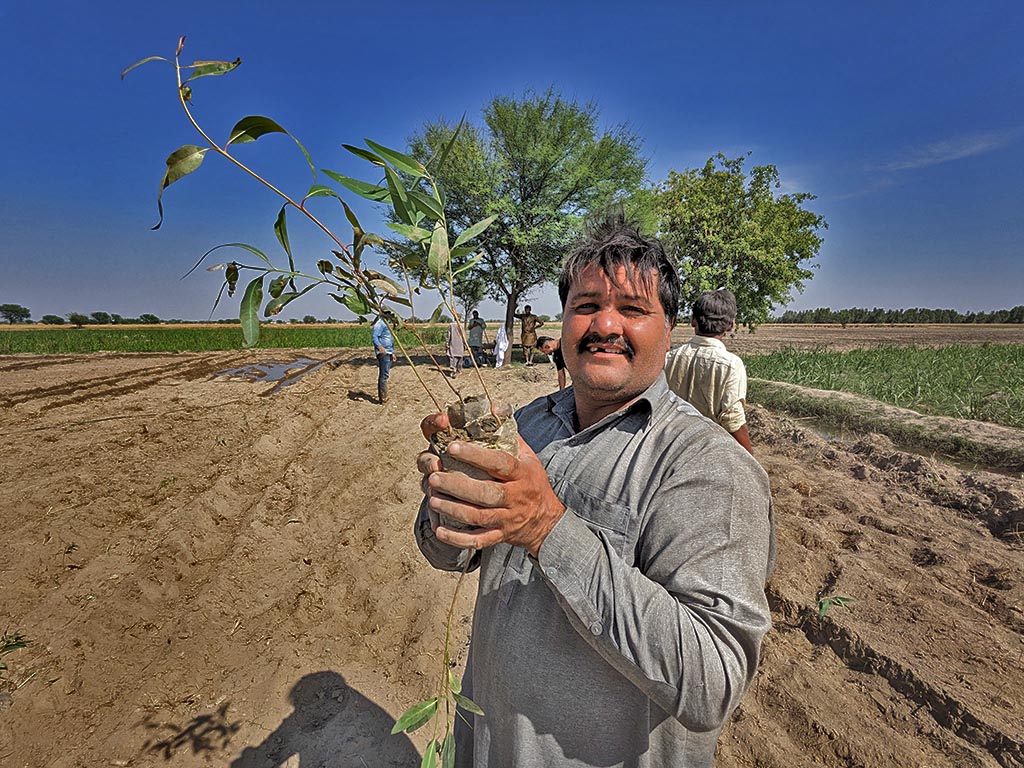HARVESTING WATER AND RESTORING LANDSCAPE WITH ROCKDAMS
The Regenerative flood mitigation syste
Special Thanks 🙏 Popular Science for making such an amazing Animation…
We at Ecoist are planning to do preserve the centuries perhaps millennials old water harvesting system that still persist in koh Solaiman mountains of Indus valley
Turkey Creek
Something remarkable happening in the Chiricahua Mountains
In the southeastern part of Arizona, the Chiricahua Mountains boast a rich tapestry of history, wilderness, and wonder. However, like many other natural landscapes, this pristine region has faced intense pressure from various fronts; westward expansion, climate change, and unsustainable land use practices.
Amidst these challenges, there emerges a beacon of hope, a watershed that defies the odds and showcases the potential for a remarkable Ecological Restoration: Turkey Creek.
“A Oasis in the Chiricahuas”
Managed by Josiah Austin and Valaire Austin from 1982 to 2022, Turkey Creek stands as an oasis in the Chiricahua Mountains. The Austins implemented nature-based solutions, particularly loose rock structures, to tackle the adverse impacts of westward expansion and climate change on this delicate ecosystem.
A Landscape Transformed
Upon arriving at Turkey Creek, scientists were astounded by the transformation. The Austins had ingeniously created ponds, swimming pools, and bathtubs along the forest lanes, harvesting water and reshaping the landscape. This not only intrigued researchers but also posed a challenge as the hydrological mechanisms at play were not easily quantifiable. Thus, began the journey of turning Turkey Creek into an experimental laboratory.
Rock Detention Structures: A Landscape Savior
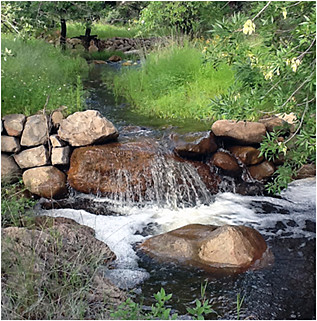 The watershed’s extraordinary feature lies in the sheer number of rock detention structures installed by the Austins. Dr. Norman and her team captured GPS data on over 2,000 of these structures, potentially only a fraction of the total. These structures, initially small rock dams, evolved into a network that slows water flow, controls erosion, and supports sustainable land use practices.
The watershed’s extraordinary feature lies in the sheer number of rock detention structures installed by the Austins. Dr. Norman and her team captured GPS data on over 2,000 of these structures, potentially only a fraction of the total. These structures, initially small rock dams, evolved into a network that slows water flow, controls erosion, and supports sustainable land use practices.
Impacts at a glance
Hydrologic Discharge Analysis
The hydrologic discharge analysis revealed a 50% reduced average rate of flow in Turkey Creek during flash flood events. Contrary to conventional beliefs, the check dams extended the timing of summer base flows by three to four weeks, showcasing their effectiveness in water retention.
Water Flow and Sediment Load
Comparing data from Rock Creek, the control site, with Turkey Creek, the treated watershed, showed that there was 28% more water flowing downstream in the latter. This defies the conventional wisdom that bare bedrock transports more water downstream. The rock detention structures, it turns out, create perched water tables above bedrock, effectively storing more water in the system.
Carbon Sequestration
Soil isotope analysis revealed the potential rate of carbon capture for rock detention structures at 200 to 250 metric tons per hectare, comparable to coastal wetlands. Beyond holding water and controlling erosion, these structures contribute to soil health and carbon storage.
TARAI
THE COMMUNITY PONDS IN KOH SOLAIMAN ALPINE RANGE
In the heart of the Koh Solaiman Alpine range lies a similar tradition as ancient as the mountains themselves. Tarai, an indigenous water harvesting practice, has been nurtured and passed down through generations by the native people of this remarkable region. Today where we find ourself on the precipice of environmental challenges like Massive Floodings devastating the country and its economy, These Community ponds seem to be the saviors. These are not just as a traditional water harvesting system but they offer profound solutions to Soil erosion, and the looming threat of flooding.
Centuries of Wisdom in Water Harvesting
 For centuries, the indigenous communities of Koh Solaiman have understood the delicate dance between the mountains, the soil, and the water. Tarai, a time-tested method, involves the creation of water harvesting structures strategically placed to slow down the flow of water and allow it to seep into the soil. This practice, handed down through the ages, is not merely a tradition; it’s a living testament to the intimate knowledge these communities hold about their environment.
For centuries, the indigenous communities of Koh Solaiman have understood the delicate dance between the mountains, the soil, and the water. Tarai, a time-tested method, involves the creation of water harvesting structures strategically placed to slow down the flow of water and allow it to seep into the soil. This practice, handed down through the ages, is not merely a tradition; it’s a living testament to the intimate knowledge these communities hold about their environment.
Mitigating Soil Erosion, Preserving the Land
 The beauty of Tarai lies not only in its ability to harvest water but also in its role as a guardian against soil erosion. As the alpine slopes receive the tender touch of rain, Tarai structures act as natural barriers, slowing down the water’s descent and preventing the ruthless erosion of precious topsoil. The result is a resilient landscape, where the soil remains steadfast, cradling the essence of life within its granules.
The beauty of Tarai lies not only in its ability to harvest water but also in its role as a guardian against soil erosion. As the alpine slopes receive the tender touch of rain, Tarai structures act as natural barriers, slowing down the water’s descent and preventing the ruthless erosion of precious topsoil. The result is a resilient landscape, where the soil remains steadfast, cradling the essence of life within its granules.
Mitigating Flooding Downstream
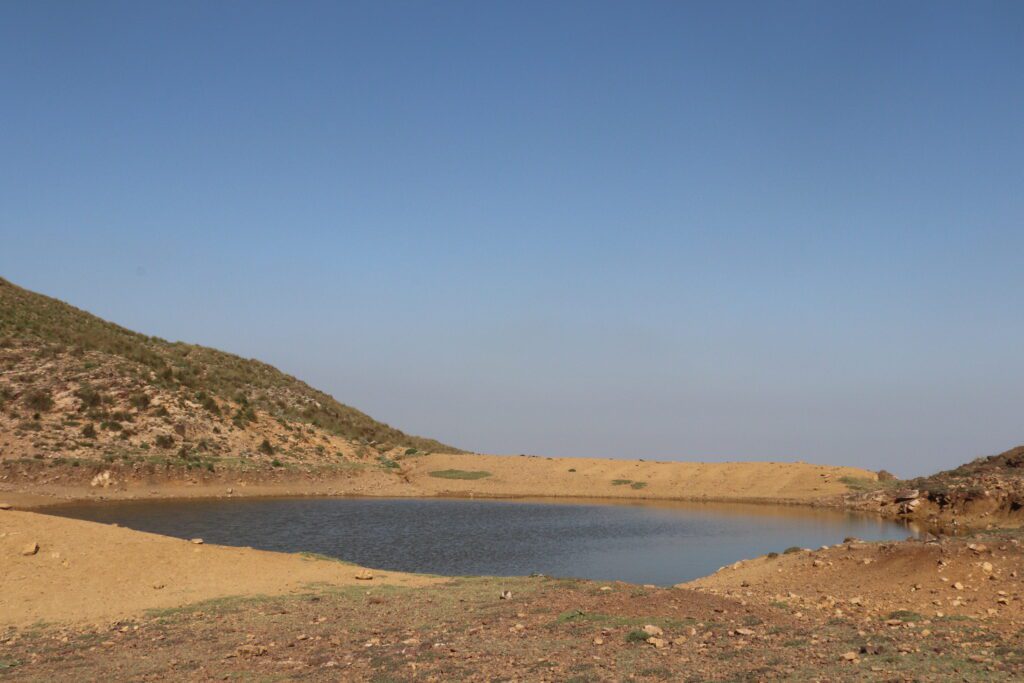 Koh Solaiman’s waters flow downstream, shaping the destinies of Southern Punjab, Northern Sindh, and Eastern Balochistan in Pakistan. The preservation of Tarai isn’t just a local concern; it’s a matter of regional significance. The intricate network of Tarai structures slows down water, allowing for gradual absorption into the soil. This not only sustains the alpine ecosystem but acts as a natural barrier against flooding in the lower regions.
Koh Solaiman’s waters flow downstream, shaping the destinies of Southern Punjab, Northern Sindh, and Eastern Balochistan in Pakistan. The preservation of Tarai isn’t just a local concern; it’s a matter of regional significance. The intricate network of Tarai structures slows down water, allowing for gradual absorption into the soil. This not only sustains the alpine ecosystem but acts as a natural barrier against flooding in the lower regions.
A Plea for Preservation
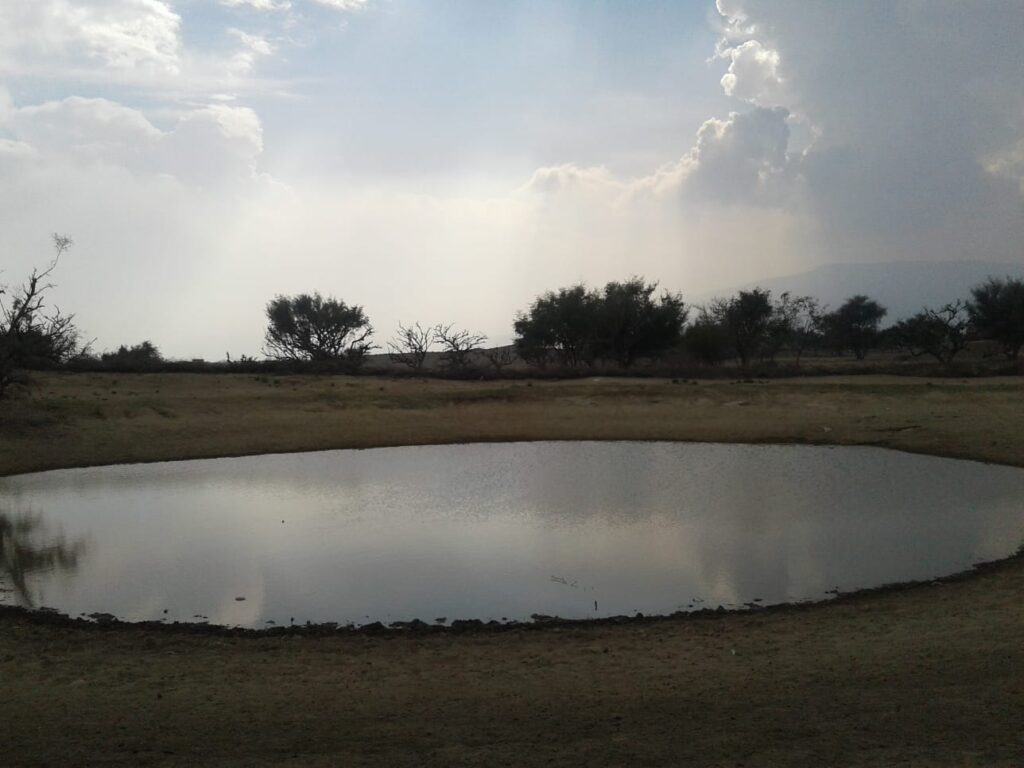 As we witness the global repercussions of environmental negligence, the need to preserve indigenous practices like Tarai system becomes urgent. The interconnectedness of ecosystems demands our attention. The delicate balance maintained by the people of Koh Solaiman is under threat, and with it, the potential to mitigate the disastrous consequences of unchecked flooding in vast regions of Pakistan.
As we witness the global repercussions of environmental negligence, the need to preserve indigenous practices like Tarai system becomes urgent. The interconnectedness of ecosystems demands our attention. The delicate balance maintained by the people of Koh Solaiman is under threat, and with it, the potential to mitigate the disastrous consequences of unchecked flooding in vast regions of Pakistan.
Tarais as seen from 1500M
Why People are not building Tarais Anymore?
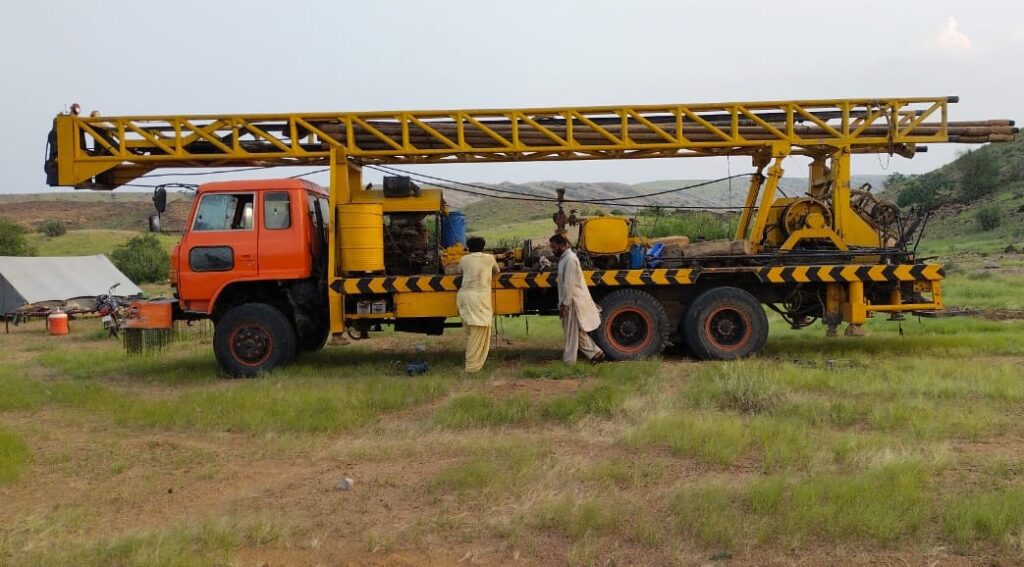 The unregulated extraction of groundwater through borewells in Koh Solaiman has triggered a concerning decline in the indigenous Tarai system. This practice disrupts the delicate balance of water absorption and flow, impacting both the alpine ecosystem and downstream regions. Moreover, the indiscriminate use of groundwater poses a severe health risk due to potential atomic radiation.
The unregulated extraction of groundwater through borewells in Koh Solaiman has triggered a concerning decline in the indigenous Tarai system. This practice disrupts the delicate balance of water absorption and flow, impacting both the alpine ecosystem and downstream regions. Moreover, the indiscriminate use of groundwater poses a severe health risk due to potential atomic radiation.
Let’s Preserve this Living Legacy
Earth’s resources are Finite Genuine treasures and we need to prioritize sustainable water management to protect the Tarai system, ensuring both environmental resilience and the well-being of the communities that rely on this age-old practice.
Preserving Tarai isn’t just about conserving a tradition it’s a call for a Global Action. It’s a recognition that the ancient wisdom of indigenous communities holds keys to our present and future challenges. To protect the Tarai system is to safeguard not only the alpine haven of Koh Solaiman but also the lives and livelihoods downstream.
Koh Solaiman’s Tarais stand as a living legacy, an example of our sustainable coexistence with nature that needs to be preserved. We need to honor the wisdom of those who, for centuries, have understood the language of the land and its waters.

